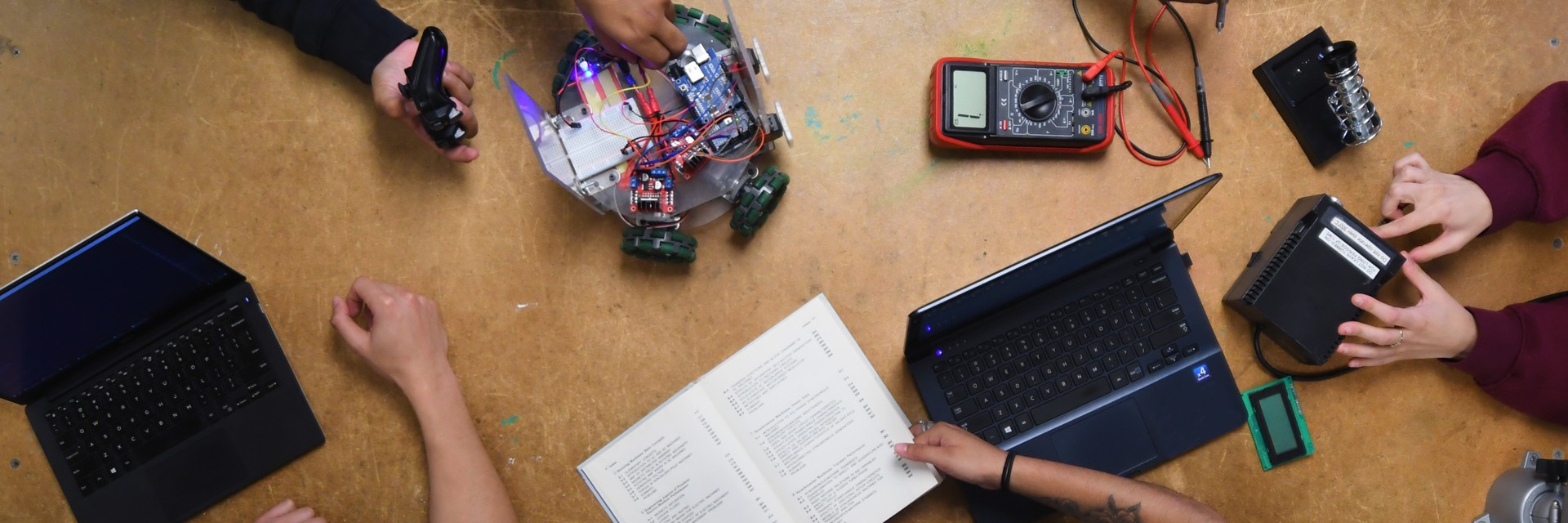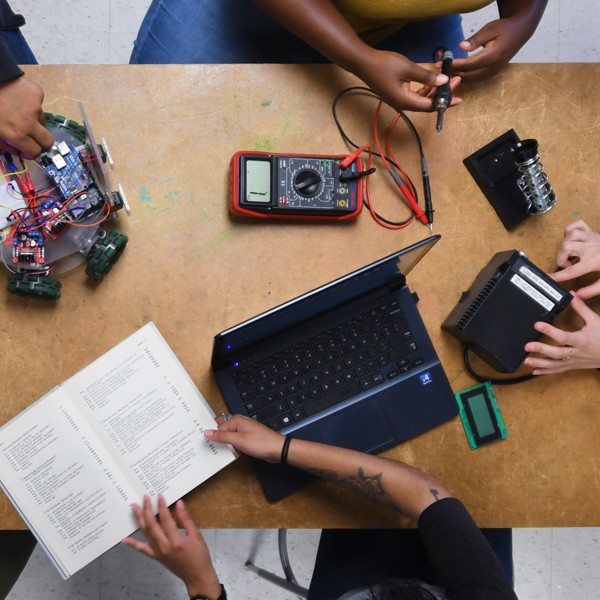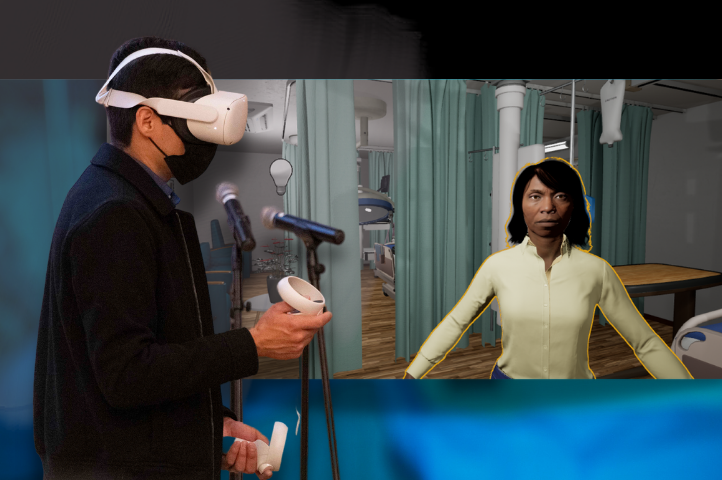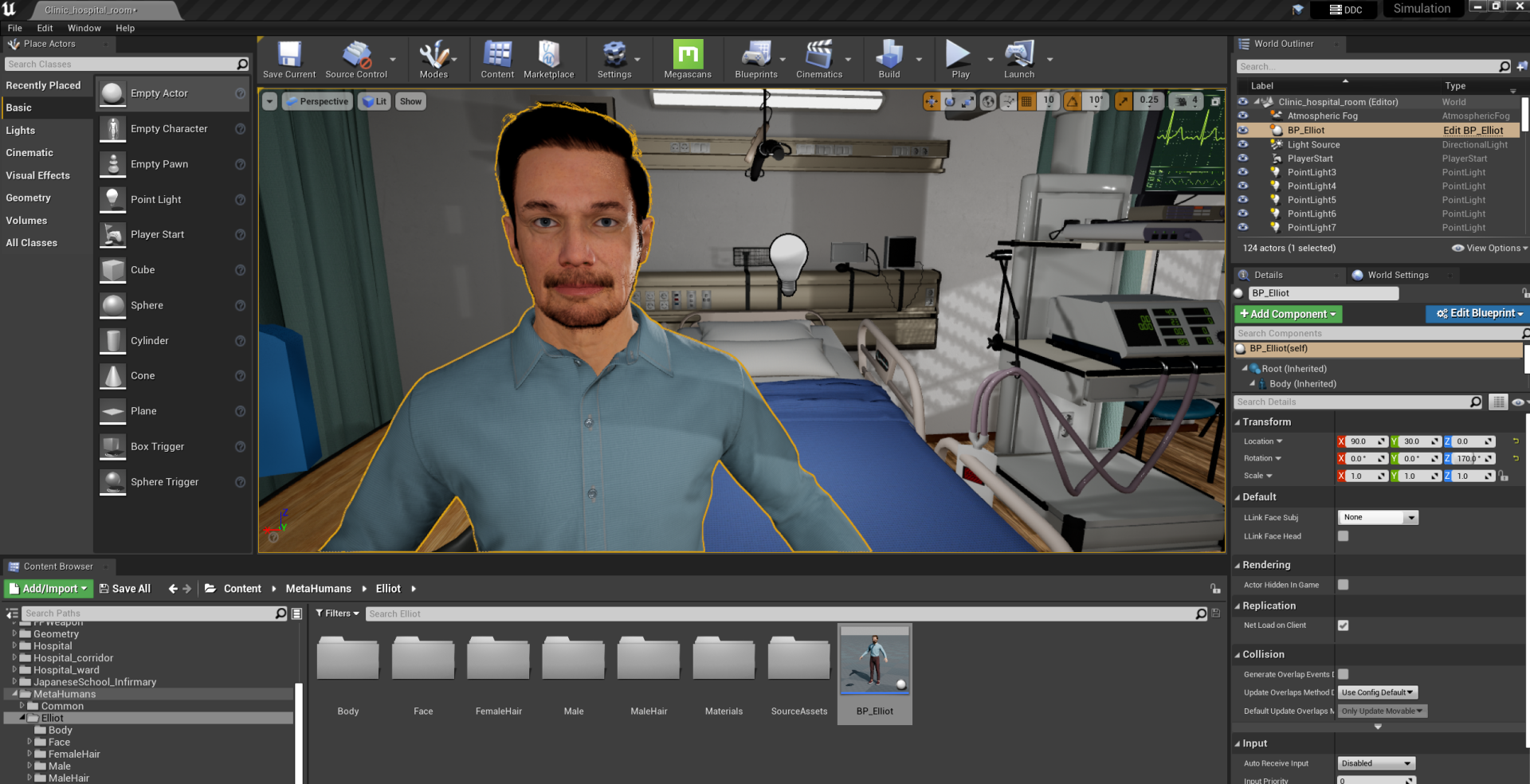Photo: ECST student wears VR goggles, augmented reality screenshot.
ECST’s Computer Science Department and Cal State LA’s Patricia A. Chin School of Nursing are collaborating to bring virtual reality (VR) into nursing training. An initial pilot project underway since the fall of 2020 is designed to create a simulation that lets nursing students interact with human-like virtual characters from diverse backgrounds who are exhibiting symptoms of hypertension. The objective of the pilot is to give students opportunities to learn and practice the cultural competency skills necessary to deliver quality care to patients with diverse beliefs, attitudes, values, and behaviors and to avoid preventable mistakes. Learnings from the pilot will be used to create additional training scenarios that can benefit from virtual reality’s ability to create 3D worlds in which people have a sense of spatial presence and, through different degrees of immersion, can interact with people and objects and perform actions.
The objective of the pilot is to give students opportunities to learn and practice the cultural competency skills necessary to deliver quality care to patients with diverse beliefs, attitudes, values, and behaviors and to avoid preventable mistakes.
Cal State LA’s nursing school already has an extensive state-of-the-art Simulation Center, including a lab equipped with a family of manikins programmed to simulate realistic vital sign functions such as pulses, blood pressure, and heart and lung sounds. Simulated care experiences are recorded for replay and review and a debriefing room lets observers view the simulation in progress.
Simulations have long been a part of nursing education as nursing schools continually seek ways to accommodate more students and better prepare them to meet evolving healthcare challenges. One of the greatest barriers to increasing the number of students in nursing schools is a lack of clinical practice time with real patients. The California Board of Registered Nursing requires that nursing students have a certain number of hours of direct contact with patients to pass courses and earn nursing degrees. The number of hours required can vary depending on the course.
One of the greatest barriers to increasing the number of students in nursing schools is a lack of clinical practice time with real patients.
“Even before the pandemic, it was hard to get the required hours of clinical experience,” says Dr. Angela T. Williams, Assistant Professor and Director of the Simulation Center. “For example, let’s say there are 10 nursing students taking a course on pediatric nursing. Assuming they can get access to a clinical environment at all, there might be only 6 pediatric patients for the students to interact with. Several years ago, the Board decided that up to 25% of the clinical experience requirement could be met with simulations. During the pandemic, that was increased to 50%.”
Photo: Dr. Angela T. Williams, Aliannea Sherman, Dr. David Krum
In addition to Dr. Williams, others from Cal State LA involved in the pilot are Dr. David Krum, Assistant Professor of Computer Science, and Aliannea Sherman, a graduate student working on a master’s degree in Computer Science. Dr. Krum is a specialist in human-computer interaction, virtual reality, and augmented reality. Sherman has an interest in human-computer interaction, games, and game engines. Sherman has chosen the nurse training pilot as her thesis.
Says Dr. Krum, “There are commercially available tools—software and systems—that use virtual reality in training for healthcare. But there are new VR tools and technologies and not all training scenarios are covered by commercial products. From the Computer Science side of things, we want to push forward the state of the art as well as create scenarios that aren’t available commercially. Virtual reality gives us more options.”
Photo: Augmented reality software and character screenshot
From the Computer Science side of things, we want to push forward the state of the art as well as create scenarios that aren’t available commercially.
Sherman was attracted to the pilot for the chance to work with VR tools originally designed for game development. Tasked with creating a diverse set of four human characters for the pilot, including two women and two men, both white and Black, she is using two tools from EPIC Games: Unreal Engine, a real-time 3D creation tool, and MetaHuman Creator, a tool for making photorealistic digital humans for use in Unreal Engine worlds.
Sherman is also committed to the cultural competency focus of the pilot. “There are well-known disparities in health and healthcare for people of color and other underserved groups,” she says.
According to Sherman, while the pilot scenario is focused on training for racial differences, future scenarios will highlight other underserved patient categories, including LQBTQA+ individuals. Say Sherman, “The whole societal component of this project makes me feel good.”






